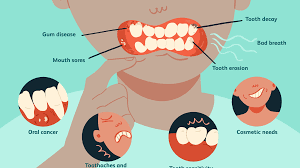A passionate kiss and sexual intimacy can help make a guy or gal weak in the knees and in some cases it can also be the cause of spreading sexually transmitted diseases (STD). Thanks to the exchange of saliva, kissing has already been proven to spread dental problems such as cavities (as they are contagious) and the more intimate the sexual act, the great odds individuals have of passing on unsavory conditions such as cold sores, mono (the original kissing disease) and even gonorrhea to their unsuspecting partners.
Cold Sores Caused by Herpes
Cold sores (or oral blisters) are an extremely common dental health issue known for providing little bursts of pain to those carrying the infection. Tiny in size, the infection may appear as harmless as a pimple, but the reality is the little blister indicates that a person is officially saddled with oral herpes, the most common type of infection caused by the virus.
Oral herpes is extremely contagious and when a cold sore is visible, it is always a sign that someone is a carrier of a strain of the disease, Herpes Simplex Type 1. The virus can be passed from person to person by innocent acts (such as sharing towels, toothbrushes or drinking from the same glass) and adult-only activities such as kissing and oral sex. Saliva, the fluid naturally produced by a human body to assist in the mastication process is the culprit known for carrying the virus from person to person and once someone is infected, they will be for life. The best way to minimize the odds of passing this STD from one person to another is to minimize sexual contact and general sharing, especially when there is a cold sore outbreak.
Individuals already infected with the condition can get tips on how to prevent infection our outbreaks by addressing the issue with a dentist. A skilled dental care practitioner can not only diagnose herpes through a visual exam and medical history review, but they can also provide medication and tips for helping to keep the virus under control.
Mono=The Kissing Disease
The herpes virus comes in many forms. Some strains cause oral cold sores, others genital infection, but there is also a variation that is the culprit behind glandular fever, AKA infectious mononucleosis. Mono has long been called the kissing disease and some shows (included the ever-popular sitcom, The Brady Bunch) even included plot lines surrounding the potential transfer of the infamous illness triggered by the Epstein Barr virus (a type of herpes) via saliva.
Once infected with the condition, individuals may feel as if they have the flu as symptoms such as fever, sore throat, loss of appetite and fatigue are all potential side effects. In order to prevent the spread of this condition, individuals are encouraged to prevent all sexual contact including during infection.
Gonorrhea of the Mouth and Throat
Once upon a time, the most threatening of STDs was something called ‘the clap’, a condition that earned its nickname for the way the nasty infection was treated. Now, most people simply refer to the infection by its medical name, gonorrhea. The infection is triggered by a bacterium called Neisseria gonorrhea, which targets mucus membranes in its path of destruction. In the human body, organs such as the penis, vagina, anus, mouth, eyes and throat all have mucus membranes and therefore are all vulnerable to the bacteria infection.
Some people are unknowingly walking around with gonorrhea as many times the symptoms (which can easily be mistaken for strep throat) lay dormant. Testing is the best way to determine if a person is a carrier or not and once that is determined abstaining from sexual intercourse and oral sex is the only way to effectively block erroneously spreading the disease to an uninfected person.
Individuals suffering from excessive cold sore outbreaks, flu symptoms that won’t disappear or other unexplained dental problems or should visit their dentist STAT to determine the cause of the issue.

